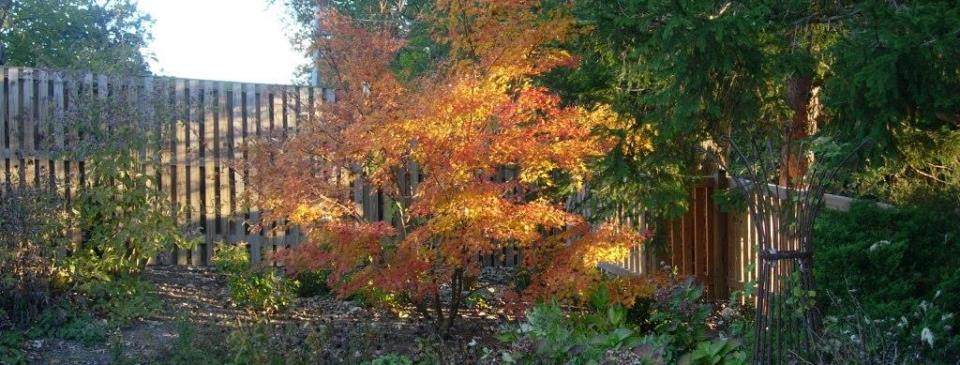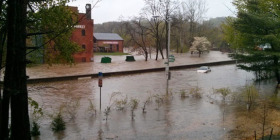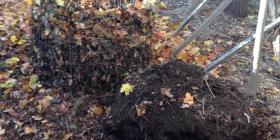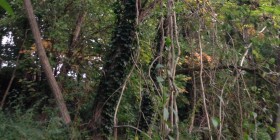Leaf them there

When we first moved into the Garden home 20 years ago, we spent 4 weekends per year raking leaves. In a half acre of yard, there were high trees and lawn—with nothing in between. I suspect this describes many yards including yours. The choices were to rake them ourselves, pay someone to rake, or try to run over the leaves with a mower. Not to mention plastic bag after plastic bag to fill and haul to the curb. At least now Baltimore takes these to a compost center (if the right type of clear bag is used).
What might be better? Cut the work and expense dramatically. Avoid paying for plastic bags that require petroleum-based technology and often wind up in the ocean to choke sea turtles. And, most importantly, improve the environment at the same time. Don’t rake.
The solution is to plant as much of the yard as possible as a woodland so that the leaves do what comes naturally: fall. That’s how that season got its name. Both deciduous and evergreen trees and shrubs all drop material that has finished its photosynthetic life. This cycle developed evolutionarily to benefit the donor plant by covering its roots to hold water, warm the overlying soil during the cold months, resupply nutrients that were manufactured up high, and to harbor the insect life and fungi that make up the huge ecosystem of the soil. Watch birds foraging among the leaves to see that it’s a banquet hall of crawling dinner down there and the home of many bees, caterpillars of moths and butterflies, and worms.
So, we replanted the grass (which was not doing well in the shade anyway) with mid-story trees, shrubs with berries for the birds, ephemeral flowers, and native groundcovers . It only took 3 or 4 years of replanting to get to stage 2—no more raking throughout much of the yard. This leaves a few areas such as driveways, paths, and remaining grass areas in which the leaves must be collected. For the less energetic and more energy-intensive approach, run an electric mower with a collecting bag over them. They get chewed finely and mixed with green elements, ready for dumping into the compost bin. For those looking for aerobic exercise (and using electrical or worse a gas-powered lawnmower), the small zones that remain to need raking can have their leaves pushed and thrown into the woodland area, or wheelbarrowed to the compost pile. In any case, NO bagging needed. In a yard with 50 trees, we haven’t bagged anything in 10 years.
I have spoken to people who say they have too many leaves and therefore must rake them up. When I have looked at the areas they describe, invariably it’s a zone of mature trees with nothing growing beneath. If we keep removing a major source of this local environment, the cover and seeds for new plants goes with them. An additional contributor to this scenario are the overabundance of deer, eating the entire undergrowth of our Eastern forest.
Amazingly, we see people raking or paying people to rake their leaves, and then paying for expensive mulching of their gardens each year. The most recent iteration is a huge truck with 6 inch PVC piping that BLOWS mulch into the garden. Can you guess how much needless energy is wasted in producing the mulch, hauling it back and forth in trucks and bulldozers, and now blowing it with gasoline-powered engines! Commercial mulch has a great place in some settings. By the way, it is MUCH cheaper to borrow a pickup truck and haul it yourself from the compost sales location. But, your trees evolved over millions of years to reuse their own leaves and to feed them to other plants, animals, insects and fungi below them. This cycle is part of a natural symphony. Do we really think that removing that and dumping commercially sterilized pine bark is as good? Or even neutral? Why not save the cash for something useful and leave the leaves where they belong?




No comments yet.